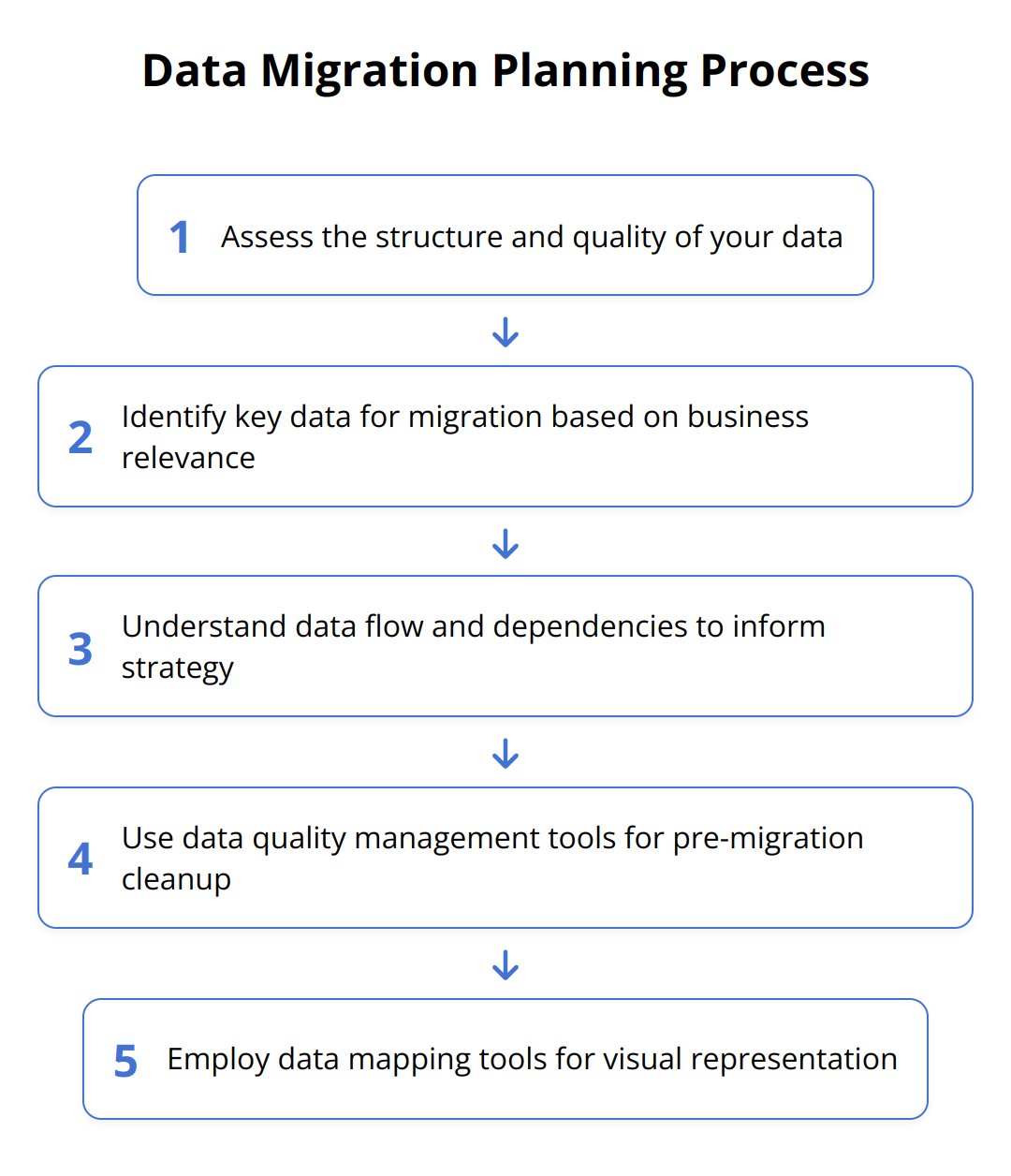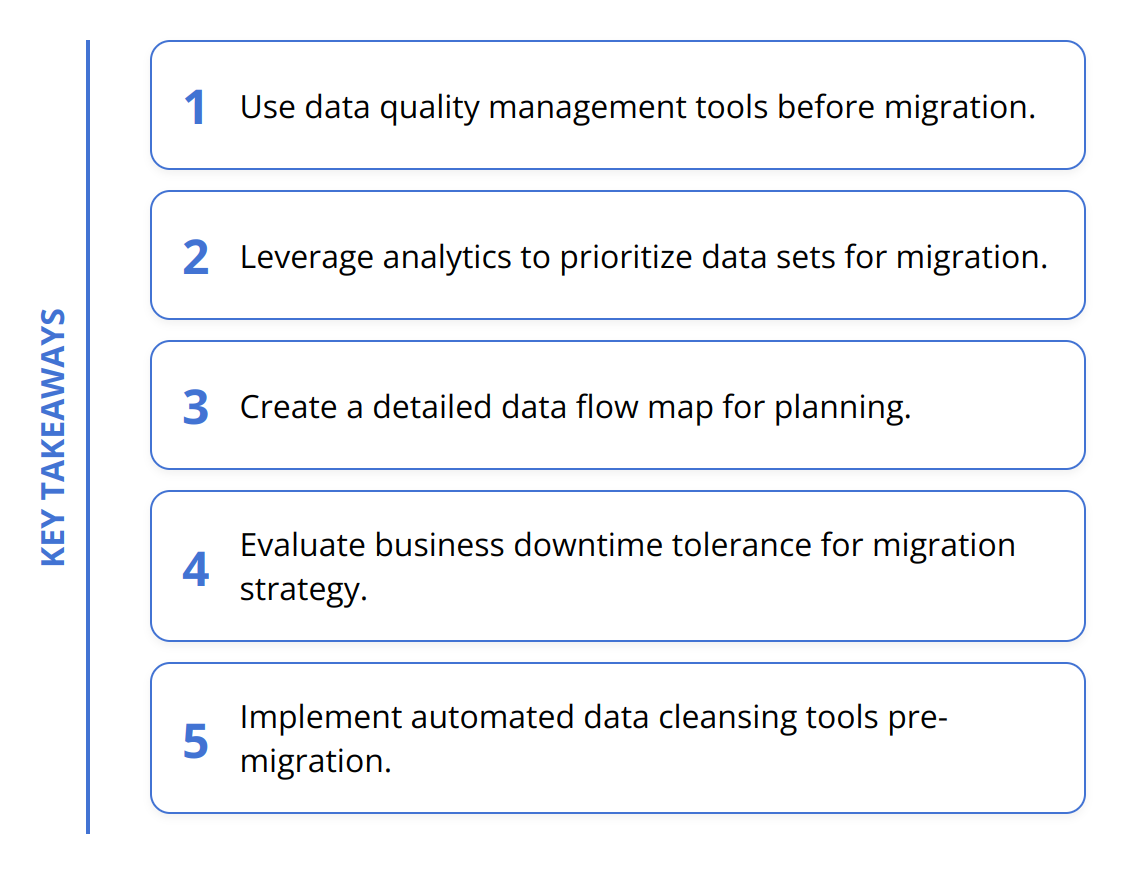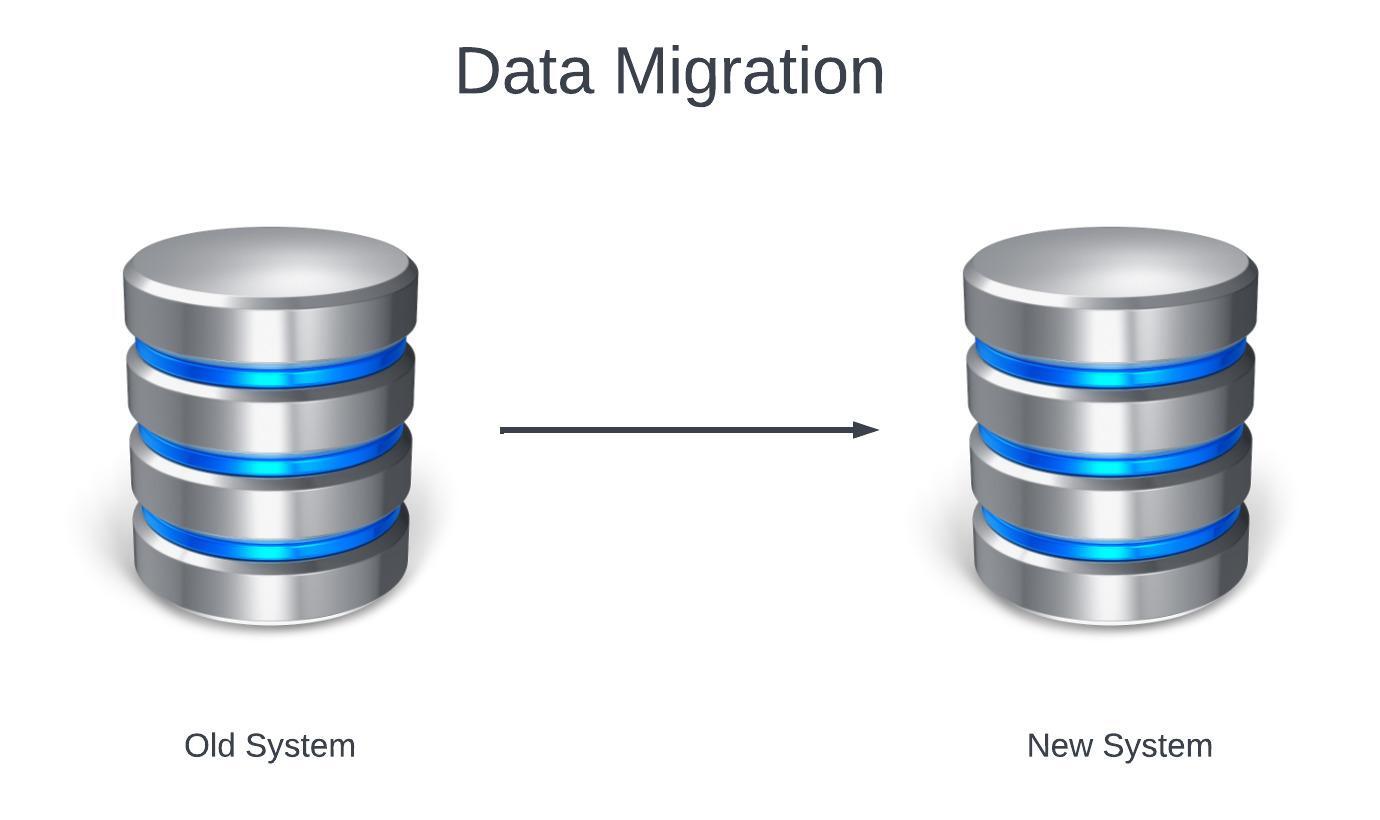At Vexdata, we understand the complexities involved in migrating retail data. Navigating this process efficiently is vital for maintaining the integrity and accessibility of valuable information.
Through this blog post, we aim to guide you on the essential aspects to consider, ensuring a successful data migration strategy. Our advice is grounded in thorough industry analysis and practical experience, providing actionable insights for retailers looking to upgrade their data infrastructure.
Mapping Your Retail Data Ecosystem
Before embarking on a retail data migration project, a deep understanding of your existing data landscape is essential. This involves more than just knowing what data you have; it’s about understanding its structure, quality, and how it flows within your systems. It’s a step that can make or break the success of your migration efforts.
Assess the Structure and Quality of Your Data
Start by conducting a comprehensive audit of your current data storage. This isn’t just about listing all data points; it involves evaluating the structure, format, and quality of your data. Misaligned data structures or poor data quality are often the root cause of migration challenges. For instance, inconsistent customer information across different systems can lead to a fragmented view of your customer base, affecting sales and marketing efforts post-migration.
Actionable Tip: Use data quality management tools to assess and clean your data before migration. This process helps in identifying duplicates, inconsistencies, and incomplete data, ensuring you migrate only high-quality, actionable information.
Identify Key Data for Migration
Not all data is created equal. Some data is critical to your operations, while other data might be outdated or no longer relevant. Identifying which data to migrate is a strategic decision that impacts both the cost and duration of your data migration project.
Retailers must prioritize customer data, transaction histories, inventory information, and supplier data as these are typically the most valuable to business operations. Deciding what data makes the cut involves understanding its relevance to your business goals and regulatory compliance requirements.
Practical Insight: Leveraging data analytics can illuminate which data sets are most accessed and used in decision-making, helping to prioritize them for migration.
Understand Data Flow and Dependencies
Mapping out how data moves across your retail systems is critical. This understanding will inform your migration strategy, ensuring that interconnected data systems are migrated in a way that maintains data integrity and system functionality. For example, how customer data from your e-commerce platform feeds into your CRM system is a flow that needs careful consideration during migration to avoid disruption to customer communications or sales processes.

Key Tip: Create a detailed data flow map that includes all sources, storages, and dependencies. This visual representation will be invaluable in planning your migration project, especially for complex retail environments with multiple integrated systems.

Tools for the Job: Employing data mapping tools can significantly simplify this task, providing a clear overview of how data is interconnected within your organization.
By meticulously assessing your data structure and quality, identifying the pivotal data for your business, and understanding your data flow and dependencies, you are laying a solid foundation for a successful retail data migration. Mastering these aspects ensures that the migrated data will serve your business needs in the new system, supporting improved processes and decision-making.
Choosing the Right Migration Strategy
Selecting the right data migration strategy is pivotal for retail businesses aiming to revamp their data infrastructure. Whether to opt for a big bang or a phased approach, and deciding between on-premises versus cloud-based solutions, can significantly influence the outcome of your data migration project. Furthermore, the choice of tools and platforms plays a crucial role in determining the efficiency and success of the migration effort.
Big Bang Versus Phased Migration
The big bang approach involves transitioning all your data from the old system to the new system in one go. While it promises immediacy, it carries higher risks due to potential system downtime and the complexities of handling large volumes of data simultaneously. On the other hand, a phased approach breaks the migration into manageable segments, reducing risks and allowing for iterative adjustments. For retail businesses, where continued access to sales, inventory, and customer data is non-negotiable, a phased migration often offers a safer and more controlled transition.

Practical Tips:
- Evaluate your business’s capacity for downtime when choosing.
- Consider the phased approach for complex systems with interdependencies.
Cloud-Based Solutions
Migrating to cloud-based platforms offers scalability, flexibility, and enhanced security. Retailers benefit from the cloud’s pay-as-you-go model, which can be more cost-effective than maintaining on-premises infrastructure. Additionally, cloud providers often equip businesses with powerful tools for data analytics and customer insights, further justifying the shift towards cloud solutions.

Recommendation: Carefully assess your data security and compliance needs when selecting a cloud provider. The right cloud solution can transform your retail operations, making it more resilient and agile.
Evaluating Tools and Platforms
The market is flooded with data migration tools and platforms, each with its strengths and aimed at specific segments of the migration process. Selecting the right toolset is crucial and should be based on your specific needs, such as data volume, complexity, and the desired outcome of the migration.
- Data Mapping Tools: Essential for understanding relationships and dependencies within your data.
- ETL Tools: Useful for extracting, transforming, and loading data efficiently.
- Quality Assurance Tools: To maintain data integrity and ensure the accuracy of the migration.
While free tools may seem attractive, professional-grade solutions often provide the reliability and support essential for business-critical operations. Investing in the right tools not only streamifies the migration process but also mitigates the risk of data loss or corruption.
To Consider: The size of your data, complexity of data ecosystem, and specific business needs should guide your choice of tools. For some insights on maintaining data quality, check benefit data accuracy integrity.
By taking a measured and informed approach to choose your migration strategy, considering cloud-based solutions, and carefully selecting your tools and platforms, you can ensure a smoother and more successful data migration. This careful planning will pave the way for enhanced retail operations and improved decision-making capabilities in your organization.
Ensuring Data Integrity
Ensuring data integrity during retail data migration is not just a good practice, it’s essential. Without it, retail businesses risk making decisions based on inaccurate or incomplete data, which can have far-reaching consequences. Here’s how to maintain the integrity of your data through the migration process.
Prep Your Data
Before you even begin migrating data, it’s critical to clean it up. Dirty data can be anything from duplicates, inconsistencies, to outdated information that no longer serves a purpose. Data cleansing is a non-negotiable step in the migration process. A clean dataset not only ensures smoother migration but also contributes to better analytics and decision-making post-migration.
Pro tip: Implement automated data cleansing tools that can handle the heavy lifting. These tools can identify and correct issues much faster than manual methods.
Perform Rigorous Testing
Testing your data for accuracy and completeness is the next crucial step. This isn’t just a one-off task but a series of tests throughout the migration process. Initially, test a small batch of data to identify any potential issues early on. As you scale up the migration, continuous testing ensures that data integrity is maintained.
Key Statistics: Businesses that routinely test their data reduce migration errors by up to 25%.
Implement Continuous Monitoring
Once your data is migrated, the job isn’t over. Continuous data quality monitoring is vital to catch any issues that could arise post-migration. Implementing a system that automatically checks for discrepancies and alerts you to potential problems will help maintain the integrity of your data in the long run.
Why it matters: Continuous monitoring can lead to a 30% reduction in data-related issues, enhancing operational efficiency.

By prioritizing data cleansing, thorough testing, and continuous monitoring, retailers can rest assured that their data integrity is preserved during and after migration. These steps are fundamental to unlocking the true potential of your data, enabling better business decisions, improved customer insights, and ultimately, enhanced profitability.
For insights on data quality management tools, refer to data quality management walkthrough.
Wrapping Up
Navigating the complexities of retail data migration demands a strategic approach tailored to the needs of each unique retail environment. The path to a successful migration is paved with careful planning, thorough data analysis, and the selection of the right tools and strategies. From mapping your retail data ecosystem and choosing an appropriate migration strategy to ensuring data integrity, every step is critical.

The benefits of a well-executed data migration are significant, offering retailers improved operational efficiency, enhanced decision-making capabilities, and a better understanding of their customers. However, achieving these benefits requires ongoing evaluation and adaptation. The retail landscape is constantly evolving, and so too should your data strategies. Continuous improvement and adaptation to new technologies and market demands will ensure that your data remains a powerful asset for your business.
At Data Testing, we believe that the future of retail data migration lies in leveraging advanced technologies like AI and no-code solutions. Our platform, Vexdata, is at the forefront of this revolution, offering an intuitive UI and 100% test coverage across a wide range of data sources. By adopting automation in data testing, retail organizations can significantly enhance data accuracy, making their migration projects more efficient and effective.
In conclusion, the journey to successful retail data migration is multifaceted, requiring diligence, expertise, and the right technology partner. By considering the unique aspects of your data ecosystem, employing a tailored strategy, and continuously adapting to new developments, your retail business can achieve data migration excellence. Together, let’s embrace the future of data testing and unlock the full potential of your retail data.

